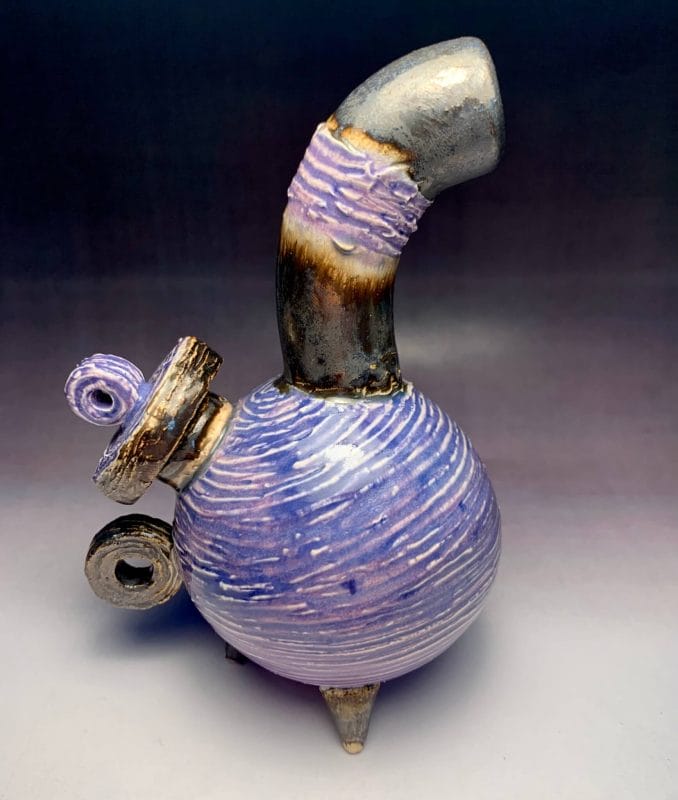
David Wright
My involvement with studio ceramics goes back some 37 years, when an interest in clay was piqued by two inspirational tutors, David Morris and David Paton at the Grimsby School of Art, whilst attending the Art Foundation course there. I went on to study ceramics at Wolverhampton Polytechnic gaining a first class honours degree in 1989 and, subsequently, studied Ceramics and Glass at post graduate level, gaining a Master’s degree from the Royal College of Art in 1992. During this latter period, I had the opportunity to complete a placement at Wedgwood in Barlaston, Stoke-on-Trent designing and modelling prototype prestige giftware. A couple of years ago, I retired from 27 years in secondary education as a teacher and faculty head, I am now engaged in exploring the possibilities of clay that I left dormant for far too long.
my ceramic pieces, and the way in which I work, are strongly influenced by being part of a generation where making and doing was fundamental and development of the imagination was encouraged as a positive attribute. I tend to work very much in the style of somebody who might be constructing a kit of parts that are joined together to make a whole. The scale of my work tends to be small echoing the proportions collectables that populated my bedroom shelves as a child.
I have an ongoing interest in how a fairly limited range of forms can be combined in a number of different formats to create a wide array of outcomes. These are then subjected to further investigations that focus on evolving methods of surface enhancement.
David Wright
April 2023
Studio ceramics collector and friend, Trevor Wood, recently wrote this statement about my work
William Morris famously said that you shouldn’t have anything in your house that wasn’t useful or you believed to be beautiful. This set Arts and Crafters from Cumbria to Cornwall creating copper chargers and pewter pitchers in increasing sizes, but there is only so much room in your average house or small flat for these. David Wright follows a different aesthetic, one from the previous century.
In the 18th century, Gentlemen (and some Ladies), in order to display their taste and discernment carried in their pockets small objects known as toys, snuffboxes, vinaigrettes, small globes, useful or not they were to be seen. Usually made of silver or other precious materials they coincided with the height of the Rococo period. The Headless Cross Potter makes ceramic toys. His forms are to be found in the work of Sevres and Limoges but he is a very painterly potter and his palette reflects this period, his links from Boucher, lilacs from Fragonard, greens from Lancret. David Wright doesn’t decorate his pots with shepherds or goddesses but inscribes the clay with disguised script, Cy Twombly style, which he covers with metallic oxides and coloured slips like lost love left bound with bronzed bands, in effect a post modern take on the Rococo. Madame de Pompadour would be be collecting them now.
Morris might frown at their lack of functionality but would applaud their beauty.
Dr. Trevor Wood MBE, FRSA











